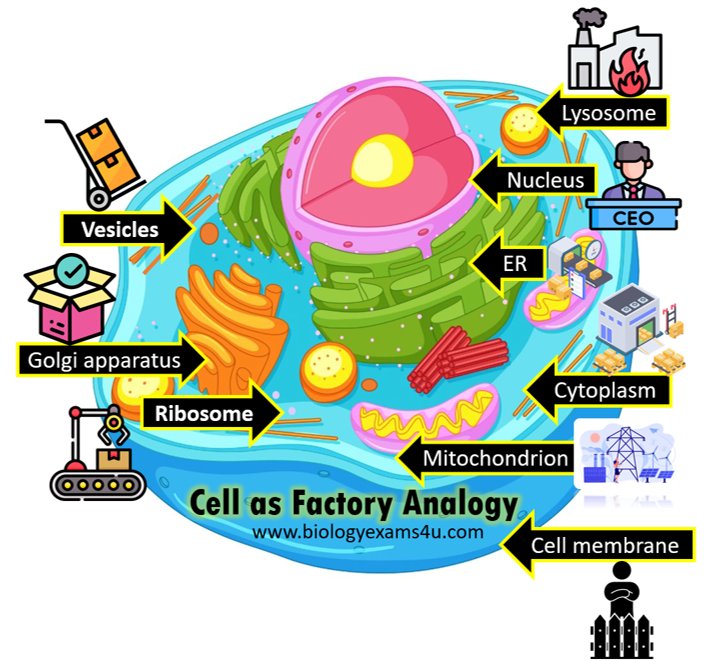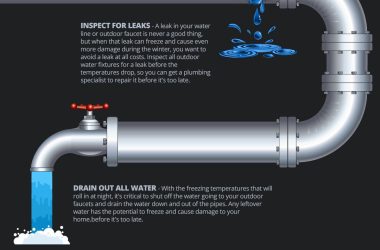Just like a factory, a cell is a bustling hub of activity where intricate processes take place seamlessly. From producing essential molecules to managing waste removal, cells meticulously carry out their duties. How is a cell similar to a factory? Both are organized systems with distinct compartments working together harmoniously to ensure smooth operations. Let’s delve deeper into this fascinating comparison to uncover the remarkable similarities between these two seemingly different entities.
How is a Cell Similar to a Factory?
Have you ever wondered how cells work like tiny factories inside your body? Just like how a factory has different departments and workers, a cell also has various parts that work together to keep everything running smoothly. In this article, we will explore the fascinating similarities between a cell and a factory to help you understand how your body functions at the smallest level.
The Cell: Nature’s Smallest Factory
Cells are the basic building blocks of all living organisms, including plants, animals, and humans. They are incredibly small but mighty, carrying out essential functions to keep us alive and healthy. Imagine a cell as a bustling factory with specialized workers and machinery, each with a specific job to do.
The Cell Membrane: The Factory Gatekeeper
Just like how a factory has gates to control what goes in and out, a cell has a protective barrier called the cell membrane. This membrane acts as the gatekeeper, allowing nutrients to enter the cell and waste products to exit. It also helps the cell maintain its shape and structure, much like how a fence surrounds and protects a factory.
The Nucleus: The Control Center
Within the cell, there is a structure called the nucleus, which acts as the control center. Think of the nucleus as the factory manager who oversees operations and makes important decisions. It contains the cell’s genetic material, DNA, which provides instructions for the cell’s functions and determines its characteristics, just like how a factory manager follows blueprints to produce goods.
The Endoplasmic Reticulum: The Assembly Line
One crucial part of a factory is the assembly line, where products are put together step by step. In a cell, the endoplasmic reticulum plays a similar role by helping to assemble and transport proteins, which are essential for various cell functions. The endoplasmic reticulum is like the busy conveyor belt in a factory, moving materials where they need to go efficiently.
Similarities in Energy Production
Factories require energy to operate their machines and produce goods, and cells also need energy to carry out their functions. In both cases, energy production is a vital process that fuels all activities.
The Mitochondria: The Powerhouse of the Cell
Just as a factory has a powerhouse to generate electricity, a cell contains structures called mitochondria that produce energy in the form of adenosine triphosphate (ATP). The mitochondria are like tiny power stations within the cell, converting nutrients into ATP through a process called cellular respiration.
The Chloroplasts: The Solar Panels of Plant Cells
In plant cells, there are organelles called chloroplasts that use sunlight to produce energy through photosynthesis. Chloroplasts act as the solar panels of plant cells, capturing sunlight and converting it into chemical energy to fuel the plant’s growth and development.
Transport Systems: Moving Materials Around
In a factory, materials need to be transported from one area to another efficiently, and in a cell, the same principle applies. Various structures help move materials within the cell to where they are needed.
The Golgi Apparatus: Packaging and Shipping
Just like how a factory packages and ships products to customers, the Golgi apparatus in a cell processes and packages proteins and other molecules for transport. It acts as the cell’s packaging center, ensuring that materials are sorted, modified, and shipped to their correct destinations.
The Vesicles: Transport Vehicles
Vesicles are small, bubble-like structures that help transport materials within the cell. They can move molecules between different organelles or transport substances to the cell membrane for release. Vesicles function like delivery trucks, carrying goods from one part of the cell to another.
Waste Management: Cleaning Up the Factory
In a factory, waste management is crucial to maintaining a clean and safe working environment. Similarly, cells have mechanisms in place to remove waste and recycle old or damaged components.
The Lysosomes: Cellular Recycling Centers
Lysosomes are organelles that act as the cell’s recycling centers, breaking down waste materials and old organelles for reuse. They contain enzymes that help digest and recycle cellular debris, much like how recycling facilities in factories process and reuse materials.
The Vacuoles: Storage and Waste Disposal
Cells also have vacuoles, which are storage compartments that can store nutrients, water, or waste products. Vacuoles play a role in waste disposal by isolating harmful substances and helping maintain the cell’s internal environment, similar to how storage tanks manage waste in a factory.
Communication and Coordination
For a factory to run smoothly, communication and coordination among workers are essential. Similarly, cells use signaling pathways and interactions between organelles to ensure that all processes are coordinated and controlled.
The Cell Signaling Pathways
Cells communicate with each other through signaling molecules that relay information and trigger specific responses. These signaling pathways help coordinate cell activities, allowing them to respond to changes in their environment or to signals from other cells, much like how managers communicate with workers in a factory to ensure tasks are carried out efficiently.
The Cytoskeleton: Structural Support
The cytoskeleton is a network of protein filaments that provides structural support and helps maintain the cell’s shape. It also plays a role in cell movement and intracellular transport, acting as the cell’s internal scaffold, similar to how support beams hold up the structure of a factory.
In summary, cells and factories share remarkable similarities in how they operate and function. Both have specialized structures and processes in place to ensure that tasks are carried out efficiently, materials are transported where they are needed, and waste is managed effectively. By understanding these similarities, we can appreciate the complexity and intricacy of the microscopic world within our bodies and the industrial world around us.
Next time you think about how a factory produces goods, remember that your cells are also hard at work, producing everything your body needs to function and thrive!
How a Factory is similar to a Cell
Frequently Asked Questions
How do cells and factories share similarities in their organization?
Both cells and factories have a structured organization where different components work together to perform specific functions. In cells, organelles like the nucleus, mitochondria, and endoplasmic reticulum have specific roles, similar to how departments in a factory work together towards a common goal.
What role do proteins play in cells and factories?
Proteins serve as essential building blocks and catalysts in both cells and factories. In cells, proteins carry out various functions, such as structural support and enzymatic reactions, akin to how machinery and equipment in a factory are crucial for production processes.
How do cells and factories handle waste and recycling?
Both cells and factories have mechanisms in place to manage waste and recycling. Cells utilize lysosomes and other organelles to break down and recycle materials, similar to how factories implement waste management systems to reduce environmental impact and optimize resources.
Final Thoughts
In conclusion, just like a factory, a cell operates efficiently with specific organelles performing specialized functions. The cell membrane acts as a control center similar to a factory manager overseeing operations. Mitochondria act as powerhouses, generating energy much like a factory’s generators. Overall, the way a cell is structured and functions closely resembles the organization and workflow in a factory. The similarities between a cell and a factory highlight the intricate design and functionality found in both systems.











